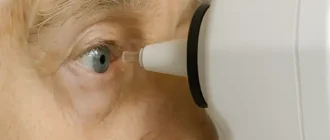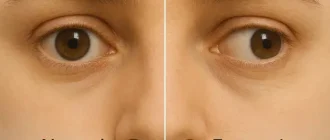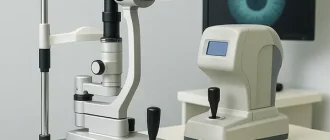Warts on the eyelids? Yeah, not fun. These pesky growths can be uncomfortable, a little scary, and definitely not a beauty booster. But don’t worry—modern medicine has your back. Here’s a comprehensive, science-backed guide on how to safely remove warts from your eyelids without compromising your vision or skin health.
Most Common Eyelid Wart Removal Methods Used by Patients (2024)
This chart shows the most popular eyelid wart removal methods among patients in 2024. Cryotherapy leads as the most commonly used approach, followed by laser treatment and salicylic acid. Natural remedies remain the least used option.
What Are Eyelid Warts, Really?
Eyelid warts, also called filiform warts, are caused by certain strains of the human papillomavirus (HPV). These long, narrow projections often appear around sensitive facial areas, especially the eyelids. They are typically flesh-colored, painless, and grow rapidly.
Can They Be Dangerous?
In most cases, eyelid warts are benign and not life-threatening—but that doesn’t mean they’re harmless. Because of their delicate location, even a small growth can cause real-world issues. Many patients describe the constant sensation of “something in the eye” when blinking, especially if the wart touches the cornea or lash line. That can lead to excessive tearing, light sensitivity, and irritation—annoying at best, debilitating at worst.
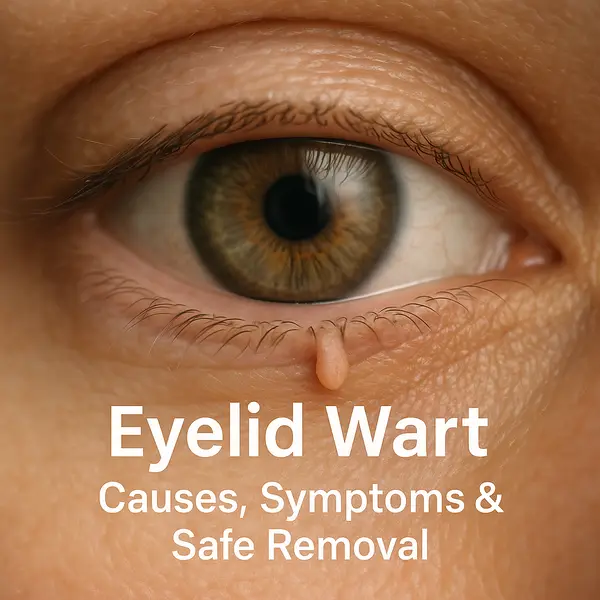
In some cases, warts partially block the visual field, causing blurred or obstructed vision, which can be especially frustrating during reading, driving, or screen time. If the wart is accidentally scratched or picked (common in sleep or when rubbing eyes), it may bleed, swell, or become secondarily infected, requiring antibiotic treatment. Recurrent infections may even necessitate minor surgical intervention to prevent damage to surrounding tissue. So while eyelid warts aren’t cancerous, their impact on daily comfort, cosmetic appearance, and eye function makes them worth taking seriously.
What Causes Them to Appear?
Eyelid warts are caused by specific strains of the human papillomavirus (HPV), which enters the skin through tiny cuts, abrasions, or mucosal contact. Once the virus is inside, it may lie dormant or begin multiplying depending on the state of your immune system. Understanding the risk factors can help reduce your chances of developing them.
Common Transmission Sources:
- Shared makeup items (like mascara wands and eyeliner pencils)
- Dirty towels or pillowcases
- Touching your eyes with unwashed hands
- Public places where hands frequently touch the face (e.g., gyms, airports)
Increased Risk Factors:
- Weakened immune system due to chronic illness, stress, or medications (e.g., corticosteroids)
- Skin trauma around the eye, such as from excessive rubbing, scratching, or poorly removed makeup
- Children and elderly adults, whose immune barriers are often less effective
- Individuals with eczema or other skin barrier issues
Reduced Risk Factors:
- Consistent handwashing and facial hygiene
- Avoiding direct contact with contaminated surfaces or personal items
- Proper disinfection of makeup tools at least once a week
Even brief skin contact with the virus doesn’t always lead to a wart—your body’s immune response plays a huge role in whether HPV takes hold. That’s why two people can be exposed to the same source, but only one ends up with a wart. Staying vigilant with hygiene and immune health significantly lowers the odds.
Diagnosis: What to Expect at the Doctor’s Office
Common Diagnostic Methods:
| Method | How It Works | Accuracy (1-10) | Average Cost (USD) |
|---|---|---|---|
| Visual Inspection | A dermatologist examines the growth | 7 | $100 – $200 |
| Dermoscopy | Magnified skin analysis using a dermatoscope | 8 | $150 – $300 |
| Biopsy | Tissue sample analyzed in a lab | 10 | $300 – $600 |
Visual Inspection: This is the first and fastest step. During your appointment, the doctor will simply look at the wart using a bright light, checking size, shape, and surface texture. It takes less than 5 minutes, is completely painless, and doesn’t require any special preparation. The results are instant—your doctor will immediately let you know if it looks like a wart or something else.
Dermoscopy: Think of this as a magnifying glass with LED lights and special filters. The dermatologist places the handheld dermatoscope close to your eyelid, giving them a detailed look at the skin structures beneath the surface. It’s non-invasive and takes about 10–15 minutes. Most patients don’t feel a thing, and you’ll get the results during the same visit.
Biopsy: If there’s any doubt or concern about malignancy, a biopsy is the gold standard. The doctor numbs the area with a tiny injection, then removes a small sample of the wart—sometimes the whole wart is taken. The procedure takes about 15–30 minutes, and there may be mild soreness afterward. Lab results typically come back in 3–5 business days, depending on the clinic’s processing time.
Dermatologists may also ask about your medical history and immune health to rule out underlying conditions that make you more prone to warts. Tissue sample analyzed in a lab | 10 | $300 – $600 |
Dermatologists may also ask about your medical history and immune health.
Safe Removal Options (Skip the Internet Hacks)
When it comes to your eyes, over-the-counter wart removers are a hard pass. Here are medically approved options:
1. Cryotherapy (Freezing)
- How It Works: Liquid nitrogen is applied to freeze the wart.
- Effectiveness: 7/10 for eyelids
- Cost: $150 – $500
- Downside: Risk of hypopigmentation
- How It’s Done: The dermatologist uses a precision applicator—usually a cryo-spray or cotton swab—to apply liquid nitrogen directly onto the wart for several seconds. You might feel a stinging or burning sensation, and the area will blister slightly within 24 hours. The dead tissue eventually falls off in about 7–10 days. Most patients require 1–3 sessions spaced a few weeks apart.
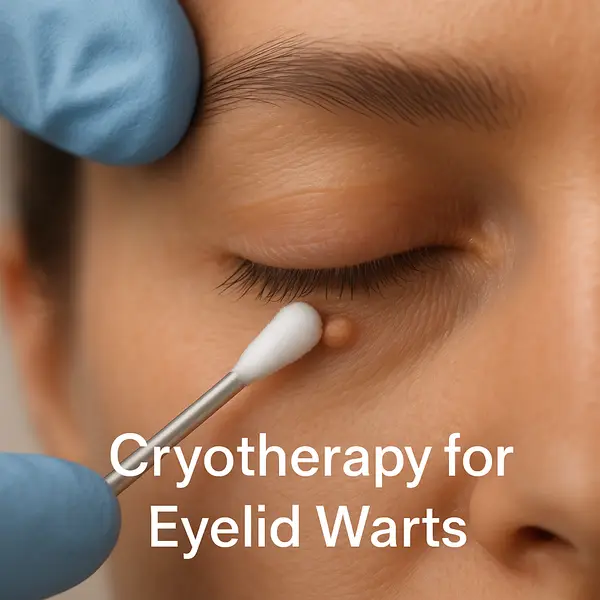
2. Laser Therapy
- How It Works: Pulsed-dye or CO2 lasers target blood vessels or tissue.
- Effectiveness: 8.5/10
- Cost: $300 – $1,000
- Perk: High precision with minimal scarring
- How It’s Done: After numbing the area with a topical anesthetic, your doctor uses a focused laser beam to heat and destroy the wart tissue. It takes about 10–20 minutes. You may need to wear protective eye shields during the procedure. Recovery is usually quick—mild redness and swelling may last 2–3 days.
3. Surgical Excision
- How It Works: Minor surgery under local anesthesia
- Effectiveness: 9/10
- Cost: $400 – $1,500
- Watch Out: May require stitches
- How It’s Done: The doctor first numbs the eyelid with a local anesthetic injection. Then, using a fine scalpel or micro-scissors, the wart is carefully cut out without damaging the surrounding skin. If needed, one or two dissolvable stitches are placed. The wound is covered with a small sterile bandage, and follow-up is scheduled in 5–7 days to assess healing.
4. Topical Immunotherapy (e.g., Imiquimod)
- How It Works: Cream that stimulates the immune response
- Effectiveness: 7/10
- Cost: $200 – $600
- Limitation: Takes weeks and must be kept away from eyes
- How It’s Done: Imiquimod cream is applied by dabbing a small amount (usually a pea-sized drop) directly on the wart, typically 3 times a week at bedtime. It must be applied with care to avoid the eyes, and hands should be washed immediately afterward. The cream is left on for 6–10 hours, then washed off. Visible results usually appear after 4–6 weeks, with complete resolution in up to 12 weeks.
Real Case, Real Results
A 42-year-old female from Houston, TX, had a filiform wart near the upper lash line. She was initially worried it might affect her vision or leave a scar. Her dermatologist recommended CO2 laser therapy, which was performed in under 30 minutes. She experienced mild redness for about three days, used a cold compress to reduce swelling, and returned to work the next day. The wart never returned, and she now gets regular skin checkups every 6 months.
A 29-year-old graphic designer from Portland, OR, noticed a small bump on her lower eyelid that kept snagging on her mascara wand. It started to grow over the course of a month and became a cosmetic concern, especially during client video calls. After consulting her dermatologist, she opted for topical immunotherapy with Imiquimod cream. The treatment took six weeks, but the wart eventually disappeared without scarring. She now disinfects all her makeup tools weekly and hasn’t had a recurrence in over a year.
A 61-year-old retired teacher from Miami, FL, had multiple small growths on her upper eyelid that interfered with her glasses. She chose surgical excision due to the number and size of the warts. The outpatient procedure was done under local anesthesia, and stitches were removed after seven days. Though healing took slightly longer due to her age, she reported no complications and was pleased with the cosmetic outcome. She now follows a strict hygiene routine and sees her dermatologist annually.
Time to Full Recovery by Removal Method
This chart compares the average recovery time in days for different eyelid wart removal methods. Cryotherapy leads to the quickest recovery, while home remedies take the longest to achieve full healing.
Preventing Future Outbreaks
Wart prevention is all about hygiene, habits, and immune resilience. Here’s how to put it into practice effectively:
- Never share towels, washcloths, or eye makeup: HPV can survive on surfaces, so using someone else’s mascara or face towel is a fast track to transmission. Always use your own clean items and wash towels after 2-3 uses with hot water (at least 130°F / 54°C).
- Keep your hands clean: Wash your hands thoroughly with soap and warm water at least 5 times a day, especially after being in public spaces or touching your face. When outside, carry an alcohol-based hand sanitizer (at least 60% alcohol).
- Avoid touching your face and eyes: It might sound obvious, but it’s easier said than done. Make a conscious effort to keep hands off your face, especially if you bite your nails or rub your eyes out of habit.
- Boost your immune system consistently:
- Sleep: Aim for 7–9 hours per night. Poor sleep weakens immune defenses, making HPV outbreaks more likely.
- Diet: Include immune-boosting nutrients like vitamin C (oranges, bell peppers), zinc (pumpkin seeds, legumes), and probiotics (yogurt, kefir).
- Exercise: At least 150 minutes of moderate activity weekly (think brisk walking or light resistance training) helps keep immune cells active.
- Disinfect makeup tools and beauty devices: Clean brushes weekly with antibacterial soap and warm water. Let them air dry completely before reuse.
- Routine dermatology checkups: If you’ve had HPV-related warts before, get a skin check every 6–12 months. Dermatologists can spot early signs before they become a problem.
By sticking to these habits, you’re not just lowering your risk of another eyelid wart—you’re building a solid barrier against many viral skin infections.
Editorial Advice
Reyus Mammadli, medical consultant, recommends that patients “never attempt self-removal of eyelid warts. The proximity to the eye makes professional treatment absolutely necessary.”
His top tip? “Ask your dermatologist if laser or immunotherapy is appropriate for your skin type and health profile.”
Patient Satisfaction with Eyelid Wart Treatments (2024 Survey)
This chart displays the percentage of patients who reported being “very satisfied” with different eyelid wart treatments in a 2024 survey. Surgical excision and laser treatment top the list, while satisfaction with natural remedies remains low.
Bonus advice: Schedule regular checkups if you’ve had HPV-related skin issues before. Prevention is always easier than removal—and cheaper too.
References
- Centers for Disease Control and Prevention (CDC). “Human Papillomavirus (HPV).” https://www.cdc.gov/hpv/index.html
- American Academy of Dermatology Association. “Warts: Diagnosis and treatment.” https://www.aad.org/public/diseases/a-z/warts-treatment
- Mayo Clinic. “Warts – Symptoms and causes.” https://www.mayoclinic.org/diseases-conditions/warts/symptoms-causes
- National Library of Medicine. “Filiform warts and their management.” https://pubmed.ncbi.nlm.nih.gov/
- American Osteopathic College of Dermatology (AOCD). “Warts.” https://www.aocd.org/page/Warts
- MedlinePlus (U.S. National Library of Medicine). “Warts – Overview.” https://medlineplus.gov/warts.html

